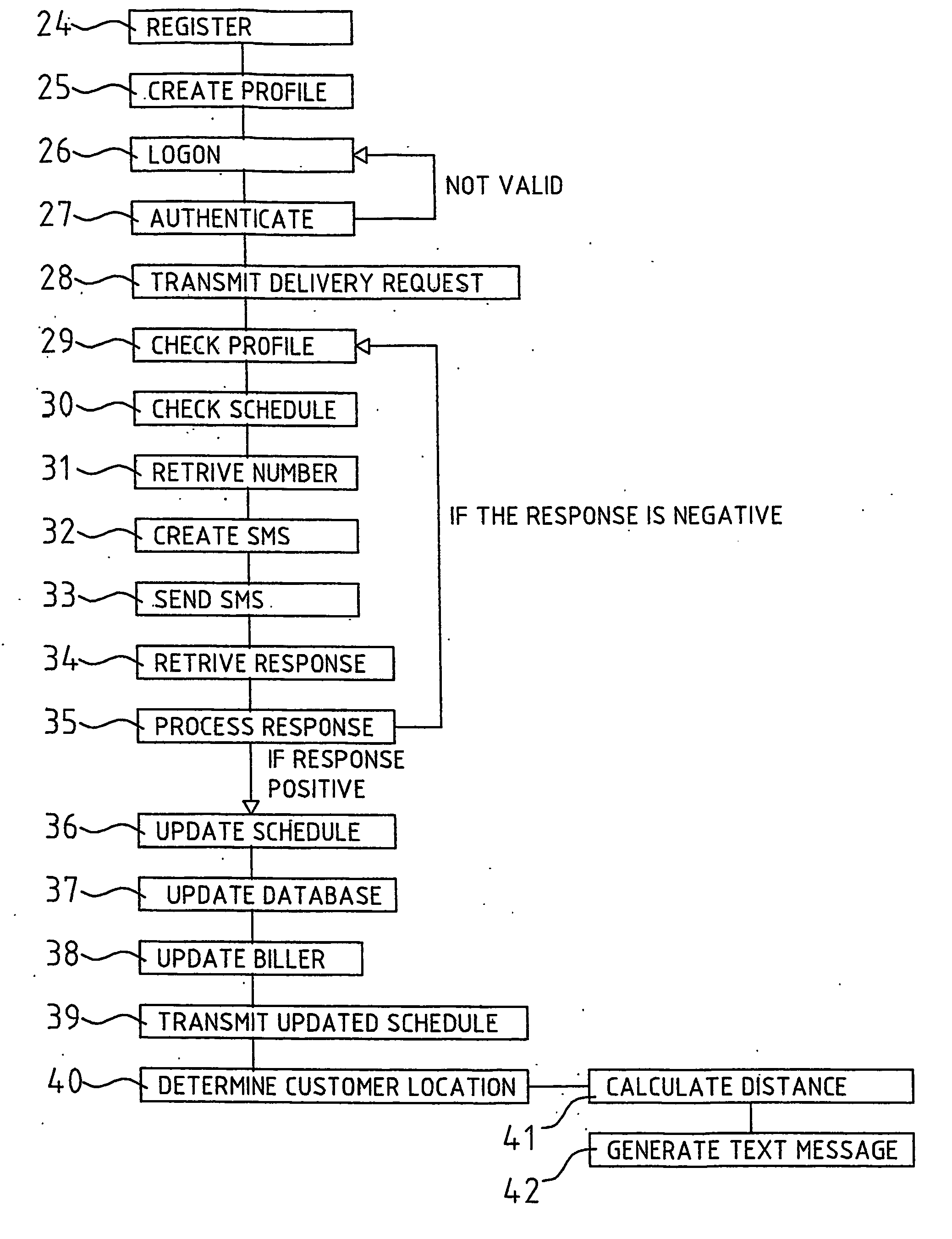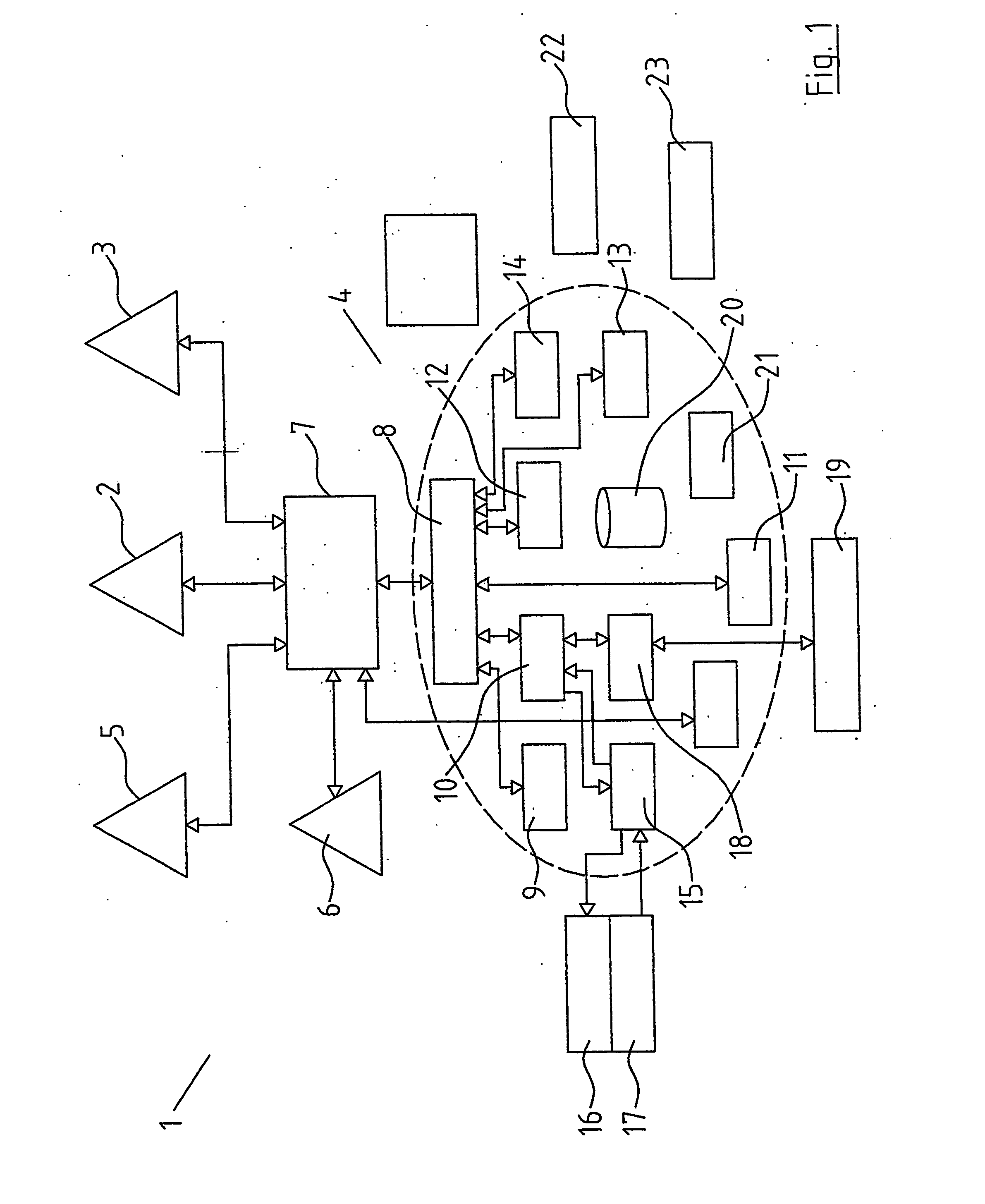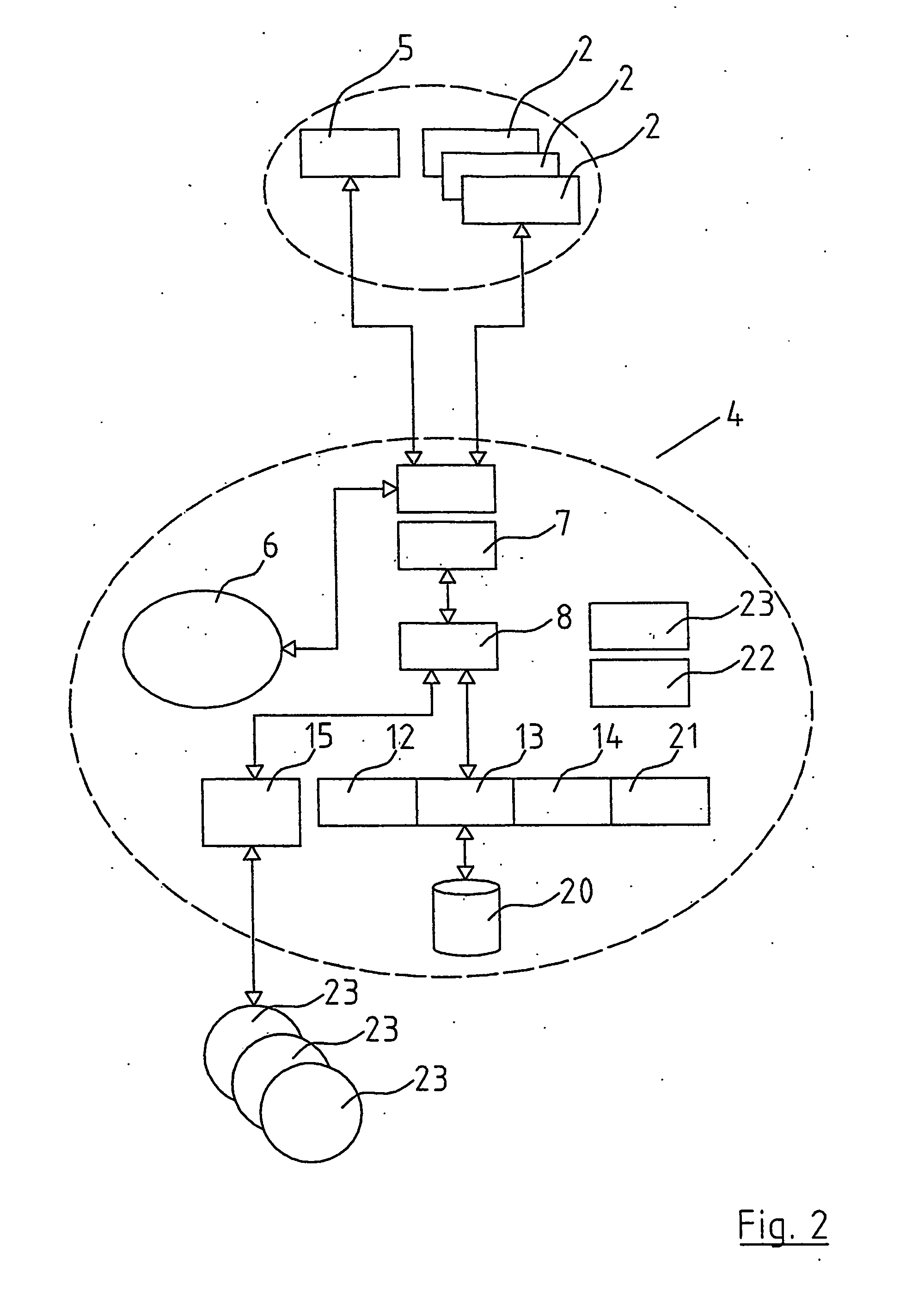Method of scheduling delivery of goods
a delivery method and delivery method technology, applied in the field of scheduling the delivery of goods, can solve the problems of over 40% of the total expenditure of the delivery company, the overall cost of the last mile delivery, and the expense of the last mile, so as to improve the quality of service, speed up the method, and simple and efficient
- Summary
- Abstract
- Description
- Claims
- Application Information
AI Technical Summary
Benefits of technology
Problems solved by technology
Method used
Image
Examples
Embodiment Construction
[0078] The invention will be more clearly understood from the following description of some embodiments thereof given by way of example only with reference to the accompanying drawings in which:—
[0079]FIG. 1 is a block diagram of the system according to the invention;
[0080]FIG. 2 is a further block diagram of the system according to the invention;
[0081]FIG. 3 is another block diagram of the system according to the invention;
[0082]FIG. 4 is a flow diagram of the method according to the invention;
[0083]FIG. 5 is a flow diagram of the negotiation of a delivery between the scheduling computer and the customer communications device;
[0084]FIG. 6 is a flow diagram of the renegotiation of the delivery initiated by a customer communication device;
[0085]FIG. 7 is a flow diagram of the renegotiation of the delivery initiated by the LCD;
[0086]FIG. 8 is flow diagram of the billing agent in operation;
[0087]FIG. 9 is a flow diagram of an LCD profile creation FIG. 10 is a flow diagram of th...
PUM
 Login to View More
Login to View More Abstract
Description
Claims
Application Information
 Login to View More
Login to View More - R&D
- Intellectual Property
- Life Sciences
- Materials
- Tech Scout
- Unparalleled Data Quality
- Higher Quality Content
- 60% Fewer Hallucinations
Browse by: Latest US Patents, China's latest patents, Technical Efficacy Thesaurus, Application Domain, Technology Topic, Popular Technical Reports.
© 2025 PatSnap. All rights reserved.Legal|Privacy policy|Modern Slavery Act Transparency Statement|Sitemap|About US| Contact US: help@patsnap.com



